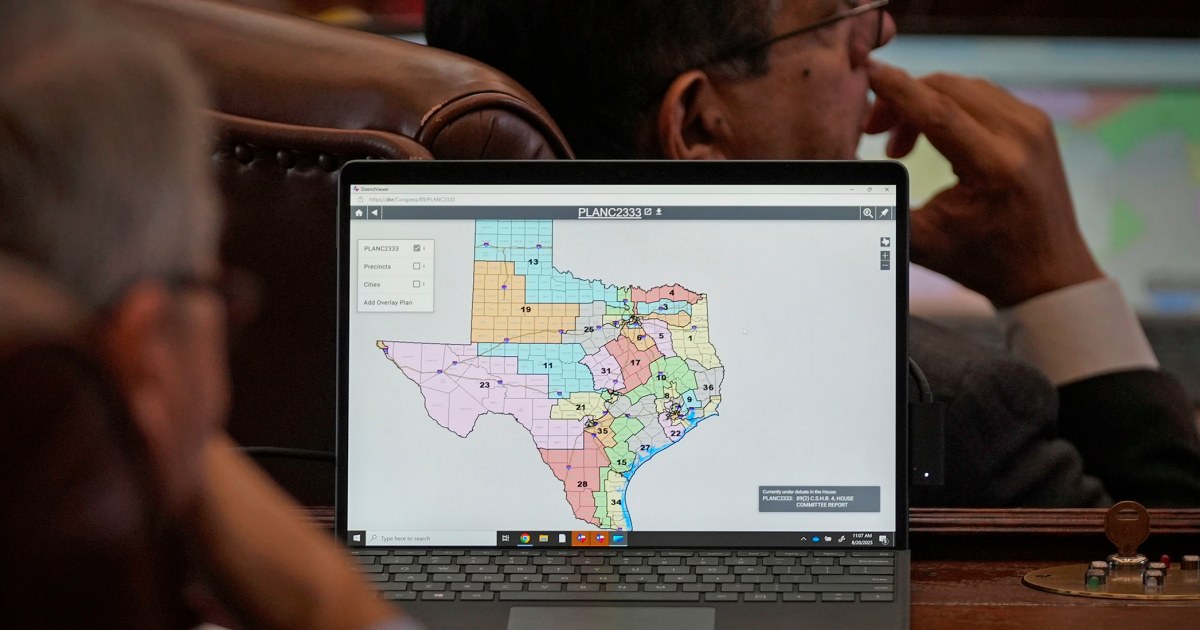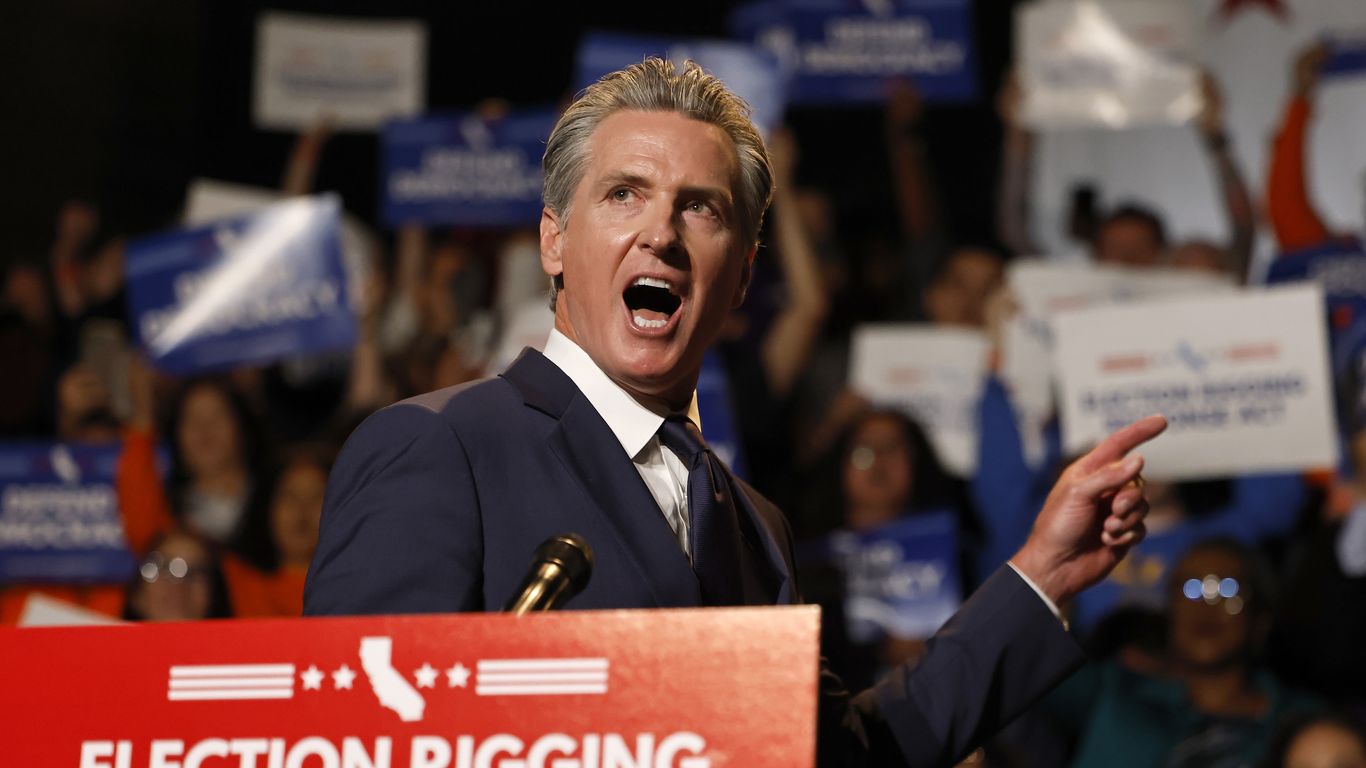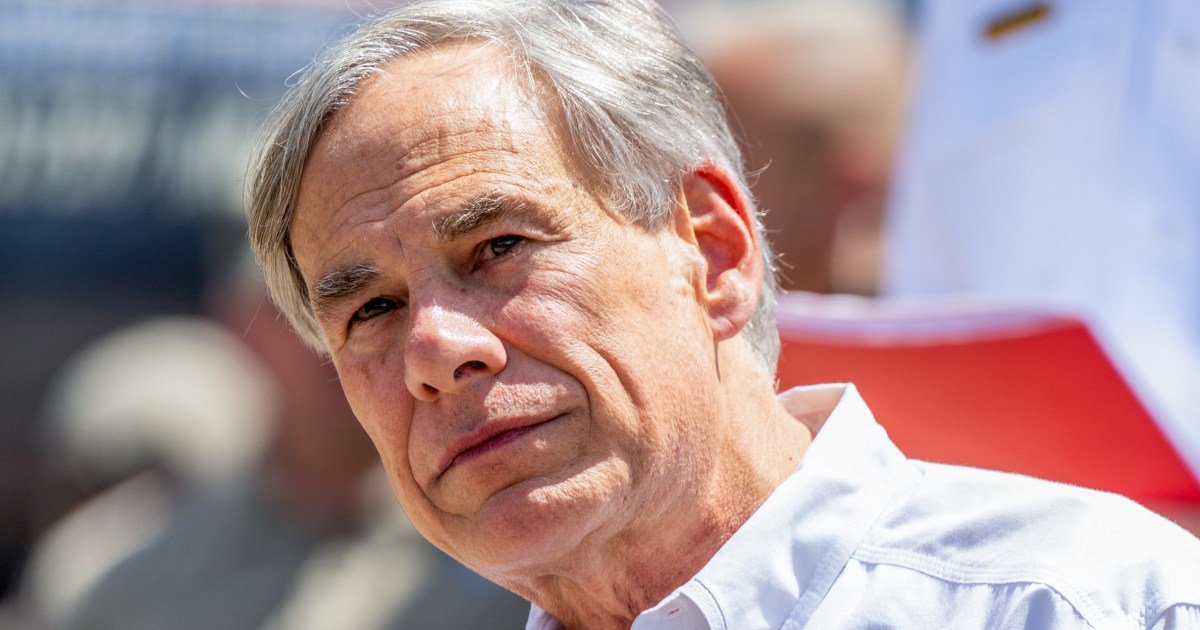Texas Redistricting Sparks Nationwide Debate

Introduction
The Texas state Senate has recently passed a new congressional map drawn by the Republican party. This development comes after a long and contentious process that was marked by significant delays caused by the Democrats. The passage of the map has sparked a nationwide scramble over redistricting and is likely to have far-reaching effects on the political landscape of the state.
Key Details
The new map, which was passed overnight, has been met with both praise and criticism. Supporters of the Republican party believe that the map is more representative of the state's political makeup and will provide fairer representation for its citizens. However, critics argue that the map has been heavily gerrymandered in favor of the Republicans, potentially giving them an advantage in future elections.
The passing of the map has also caused a stir in other states, as many are closely watching Texas for its redistricting process. This is because Texas is gaining two new congressional seats, making it a key battleground in the fight for control of the U.S. House of Representatives.
Impact
The passage of the new map has significant implications for both parties and the citizens of Texas. It has the potential to shift the balance of power in the state and may impact the outcome of future elections. The map also highlights the importance of redistricting and its potential to shape the political landscape. As the map moves to
About the Organizations Mentioned
Republican Party
The **Republican Party**, also known as the **GOP (Grand Old Party)**, is one of the two major political parties in the United States, founded in 1854 primarily by anti-slavery activists opposing the Kansas-Nebraska Act and the expansion of slavery into U.S. territories[1][5]. It was formed from a coalition of former Whigs, Democrats, and Free Soil party members who shared opposition to slavery and a desire for a national political force promoting economic development and social order[2][5]. The party's early base included northern Protestants, businessmen, factory workers, professionals, and prosperous farmers. It strongly supported pro-business policies like the national banking system, the gold standard, railroads, and high tariffs[1][3]. Abraham Lincoln, the first Republican president elected in 1860, led the party through the Civil War, championing the abolition of slavery and the preservation of the Union. This solidified the GOP’s dominance in national politics for decades, especially in the North, while it remained weak in the South[1][5][6]. Historically, the Republican Party was instrumental in major social reforms, including the Emancipation Proclamation and the passage of the 13th, 14th, and 15th Amendments, which abolished slavery, guaranteed equal protection, and secured voting rights for African Americans, respectively[6]. The party also supported women's suffrage early on, backing the 19th Amendment[6]. In the 20th century, Republicans were associated with both conservative economic policies—favoring reduced taxes, limited government regulation, and individual economic freedom—and a strong national defense[7]. The party experienced ideological splits, notably in 1912 when Theodore Roosevelt led a progressive faction away from the conservative wing[1][5]. Today, the GOP continues to promote conservative social policies and states’ rights, opposing extensive federal intervention and advocating free-market principles[7]. For readers interested in business and technology,
Democratic Party
## Overview of the Democratic Party The Democratic Party is the oldest continuing political party in the United States, with its roots tracing back to 1792 as the Democratic-Republican Party. Founded by Thomas Jefferson and James Madison, it initially advocated for a decentralized government and states' rights, opposing a strong central authority[1][2]. Over time, the party evolved, becoming more progressive and supportive of federal government intervention in social and economic affairs. ## History The modern Democratic Party was formally established in 1828, with Andrew Jackson's presidential campaign marking a significant turning point. Jackson's successful campaign expanded voting rights to all white men, regardless of land ownership, and further reduced federal power[3][6]. The party became deeply divided during the Civil War era, with Northern Democrats supporting limited slavery expansion and Southern Democrats advocating for its perpetuation[3][5]. Post-Civil War, the party became a stronghold for Southern whites who opposed Reconstruction[3]. ## Key Achievements The Democratic Party has played a pivotal role in shaping U.S. history: - **Civil Rights**: The party supported key civil rights legislation, including the Voting Rights Act and the Civil Rights Act of 1964. - **Social Programs**: Democrats have been instrumental in establishing and expanding social programs like Social Security, Medicare, and Medicaid. - **Economic Policies**: The party has often championed progressive economic policies, including labor rights and environmental protection. ## Current Status Today, the Democratic Party is a major force in U.S. politics, advocating for a strong federal government role in addressing social and economic issues. It emphasizes progressive policies on healthcare, climate change, and economic inequality[6]. ## Notable Aspects - **Symbolism**: The party's symbol, the donkey, originated from Andrew Jackson's opponents calling him a "jackass," which his supporters adopted as a mascot[6]. - **Diversity**: The party has become increasingly diverse, representing a wide range of socio-economic and
U.S. House of Representatives
## Overview The **U.S. House of Representatives** is the lower chamber of the United States Congress, which—alongside the Senate—comprises the nation’s legislative branch[1][2]. Established by Article I of the U.S. Constitution, its structure reflects the “Great Compromise,” balancing population-based representation (the House) with equal state representation (the Senate)[5][7]. The House currently consists of 435 voting members, apportioned among the 50 states based on population, plus six non-voting delegates representing Washington, D.C., Puerto Rico, and other U.S. territories[1][4]. ## Functions and Powers The House plays a pivotal role in the federal government, with exclusive authority to initiate revenue (tax) bills, impeach federal officials, and elect the president in the event of an Electoral College tie[1][2][4]. It is central to the federal budget process, shaping and passing appropriations bills that fund government operations[3]. The House also holds investigative and oversight powers, scrutinizing the executive branch to ensure accountability[8]. All legislation must pass both the House and Senate in identical form before reaching the president’s desk[5]. ## History and Evolution Since its inception in 1789, the House has been directly elected by the people, with members serving two-year terms to ensure responsiveness to public opinion[4]. Initially, suffrage was limited, but expanded over time, especially after constitutional amendments and the civil rights movement[2]. The House’s structure—based on population—was designed to give populous states greater influence, while the Senate protects smaller states’ interests[5][7]. ## Leadership and Operations Leadership is dominated by a majority-rule system, with the Speaker of the House—elected by members and traditionally from the majority party—wielding significant influence over the legislative agenda and committee assignments[3][7]. The Speaker is second in the presidential line of succession[3].








